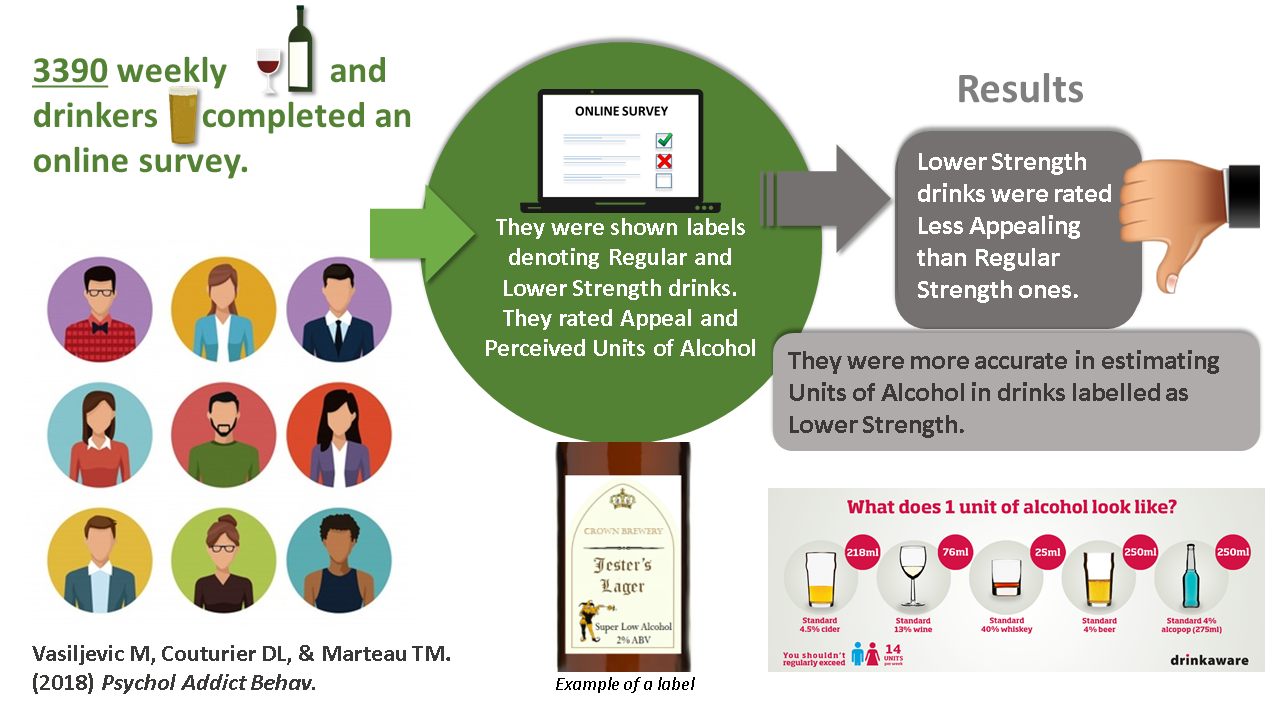
There is growing interest from policy makers and producers to extend the range of lower strength alcohol products above the current cap of 1.2%ABV set out in national legislation in order to reduce overall alcohol consumption. However, there is a lack of evidence on how the general population perceives alcohol products labelled as lower in strength. In a sample of 3390 weekly wine and beer drinkers we assessed the impact of labelling wine and beer with different verbal descriptors denoting lower strength, with and without %ABV, on product appeal and understanding of strength.
Products labelled with verbal descriptors denoting lower alcohol strength (Low and Super Low) had less appeal than Regular (average) strength products. Furthermore, appeal decreased as the %ABV shown on the label decreased. Understanding of strength was generally high across the various drinks with the majority of participants correctly identifying or erring on the side of caution when estimating the units and calories in a given drink, appropriateness for consumption by children, and drinking within the driving limit.
Impact on product appeal of labeling wine and beer with (a) lower strength alcohol verbal descriptors and (b) percent alcohol by Vol. (%ABV): An experimental study. Psychology of Addictive Behaviors. Vasiljevic, M., Couturier, D.-L., & Marteau, T. M. (2018).
